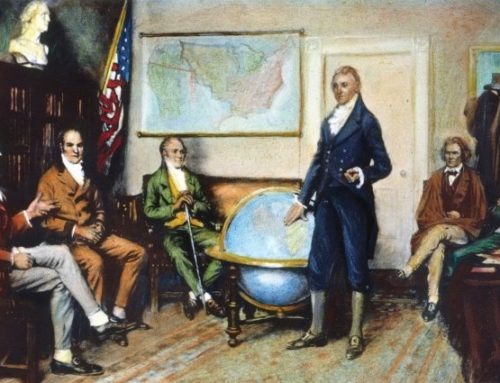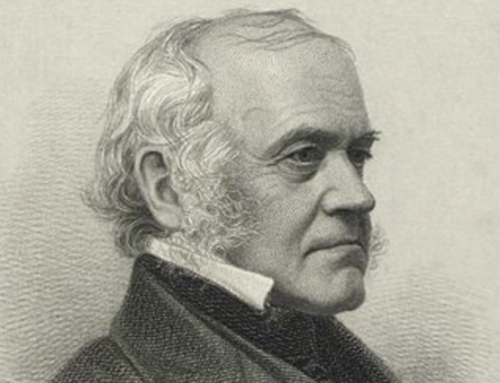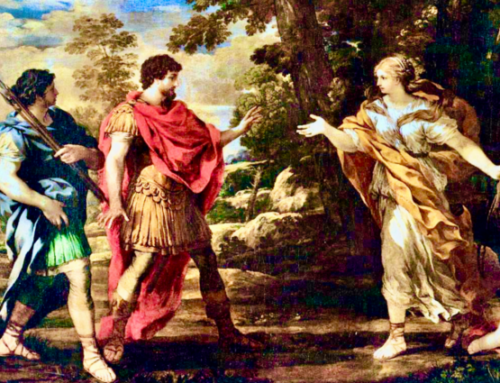 As the clock struck midnight to begin 2020, talk of a new “Roaring Twenties” began in earnest. This portends a wave of retrospectives, historical, fictional, and sensational. One of these will inevitably be Prohibition, the outlawing of the “manufacture, sale, or transportation of intoxicating liquors” or their import/export into the United States and its territories. Prohibition lent itself to numerous Hollywood film and television productions, filled with gangsters, speakeasies, “tommy guns,” moonshine, and bathtub gin. From James Cagney in Public Enemy to Robert Stack’s Untouchables to the recent Boardwalk Empire on HBO, the sum of these have shaped public understanding of the law—that Americans continued to drink, that it was widely flouted, and that it spawned a wave of unprecedented gang violence. Most Americans believe Prohibition was a failure, as proven by repeal. That perception is inaccurate. It achieved many of its goals and as calls for new prohibitions arise—against pornography, in particular—revisiting the anti-liquor law is instructive.
As the clock struck midnight to begin 2020, talk of a new “Roaring Twenties” began in earnest. This portends a wave of retrospectives, historical, fictional, and sensational. One of these will inevitably be Prohibition, the outlawing of the “manufacture, sale, or transportation of intoxicating liquors” or their import/export into the United States and its territories. Prohibition lent itself to numerous Hollywood film and television productions, filled with gangsters, speakeasies, “tommy guns,” moonshine, and bathtub gin. From James Cagney in Public Enemy to Robert Stack’s Untouchables to the recent Boardwalk Empire on HBO, the sum of these have shaped public understanding of the law—that Americans continued to drink, that it was widely flouted, and that it spawned a wave of unprecedented gang violence. Most Americans believe Prohibition was a failure, as proven by repeal. That perception is inaccurate. It achieved many of its goals and as calls for new prohibitions arise—against pornography, in particular—revisiting the anti-liquor law is instructive.
Drinking and calls to temper or prohibit it are as old as the Republic. Colonial America bragged a long tradition of local taverns huddled close to major turnpikes and nestled in its major cities, offering hospitality and social contact to farmers, mechanics, and businessmen looking to relax in a class-free atmosphere. Stretching back into the eighteenth century, even prior to national independence, these public houses acted as focal points for communities, egalitarian islands where farming and counting house anxieties could be left behind for a few hours. As the United States transitioned into an industrial economy across the nineteenth century, these watering holes retreated before the saloon, a magnet for factory workers.[1]
Establishments selling alcohol to the working man came in two basic varieties: the barroom dive and the neighborhood saloon (the high-end clubs catering to wealthy businessmen remained far from their reach). Dives grouped around city docks or the factory districts. Usually little more than a narrow storefront (the illegal dives selling booze without a license were called “blind pigs,” an early version of the speakeasy), customers stood at the bar, foot on the rail, or in small groups drinking cheap beer and whiskey. Normal patrons of these “drinking stands” were factory workers between shifts, before or after a hard days’ work. The varieties of alcohol were basic and their quality poor.[2]
The neighborhood saloon offered more comfort to the customer: seats and tables for socializing, better lighting, higher quality of drink and food, and entertainment like piano music and singing. Some saloons offered free lunch (mandated by many states to mitigate drunkenness) and for those able to pay a small fee a lunch counter supplied them with sandwiches. For many immigrant patrons with tiny tenement apartments and unhealthy work spaces, these saloons were their real homes, the best physical space they occupied all day long. Male-only establishments, they often attracted men of the same ethnicity, where a shared native language could be spoken freely, or the same industry, where co-workers could socialize outside the gaze of bosses. If the law allowed, the saloon might remain open for long hours, and once inside customers escaped the regimented requirements of industrial time. Some saloons also doubled as recruiting centers for unemployed workers where word of job openings spread quickly.[3]
The saloon also bred dangerous and sometimes criminal behavior. Saloons helped the development of political corruption and “bossism,” as local party sharps organized political machines inside saloon networks. Oftentimes the saloon-keeper himself was politically connected and free rounds helped gather up needed votes. Some saloons acted as fronts for brothels and gambling. Police payoffs and support of political bosses warded away the law.[4]
The most obvious saloon problem was alcoholism and drunkenness. In the 1880s, American breweries began aggressive marketing and franchising campaigns to sell their products, which included contracting saloons for exclusive sale of their beer and opening new ones. The corporatization of drinking resulted in a spike of saloons. By 1915, for example, in Niagara Falls, New York, there was one saloon for every 171 people, the highest concentration of saloons in the country. By comparison, New York City had one saloon for every 515 people. More franchised saloons meant more beer drinking. Beer production increased from 1.2 billion to 2 billion gallons between 1900 and 1913, and by the 1910s, adult per capita beer consumption was 29.53 gallons per year, almost ten times greater than fifty years before. Arrests for public drunkenness in Boston rose from 49.3 per 1000 people in 1898 to 60.3 per 1000 by 1907. Many of these drunks patronized saloons constantly and brought their troubles home, victimizing wives and children. 40.4% of Boston arrests for public drunkenness in 1907 were of married men and over 83 % of these men had children as well, on average 4.5 children per family. One crusading anti-liquor minister claimed in 1889 that 3000 women every year “are sent to untimely graves by the cruelty of drunken husbands.”[5]
Blowback was inevitable. Temperance and prohibition movements expanded rapidly in the years after the Civil War, as many civic reformers who formerly crusaded against antebellum slavery, turned their attention to the evils of drink. Men and women joined the fight against liquor and organizations like the Anti-Saloon League and Women’s Christian Temperance Union gained considerable political influence. World War One also aided the anti-liquor movement, as American propaganda labeled beer a German, and hence unpatriotic, product. In 1918, the Boston Episcopalian minister William Van Allen thundered:
This is a holy war: We are fighting Kaiserism in its breweries as well as in its batteries, in its saloons as well as in its submarines. But victory will come with a new freedom such as the world has not yet known, when the righteous nation that keepeth truth shall enter into its full heritage. Down with the Kaiser! Down with his chief ally!
In addition, the public perceived the prohibition of alcohol a “Progressive” reform, a far more justifiable social reform than those advocated by socialist and anarchist radicals. Campaigns against prohibition by beer and liquor companies lost their effectiveness, all but two states approved the Eighteenth Amendment by 1919, and upon passage of the Volstead Act, Prohibition became law in January 1920.[6]
Popular understandings of Prohibition are enveloped in five major myths: that alcohol use increased between 1920 and 1933 as a kind of social spite against the law, that alcohol-related deaths spiked as a result of this binge, that violence exploded with crime syndicates battling for control of the illegal liquor trade, that Prohibition demonstrated federal overreach and intrusion into a business previously handled by the states and localities, and that the amendment was repealed in 1933 in reaction to all of these.
Americans’ use of alcohol decreased during Prohibition. By driving the alcohol trade underground, thereby restricting easy access and driving up costs, imbibing fell dramatically. In the early years of Prohibition, consumption collapsed to 20-40% of pre-1920 levels. Even in the later years prior to repeal, consumption plateaued at around 70% of pre-prohibition rates. More interesting, these decreased levels of alcohol consumption held for fifty years, not exceeding pre-1920 levels until the 1970s, demonstrating the acculturating impact of Prohibition. “[Prohibition] created an historic opportunity to socialize rising generations in a lifestyle in which alcohol had no place,” historian Jack S. Blocker explained. By “socializing Americans in temperate habits,” many young Americans grew up in an environment free from alcohol and developed tendencies that lasted a lifetime. In 1939, six years after repeal, 42% of Americans were tee-totalers; in 1960, it was still 38%. Today, it hovers around 33%. These demographics had a class element too. The high cost of illegal hooch highly impacted working-class Americans who could least afford it, while the wealthy consumed as they wished. Speakeasies may have abounded, but they catered to a minority of Americans comfortable with evading the law and who could afford it.[7]
As American consumption rates fell, so too did deaths from alcohol-related diseases. Cirrhosis cases began to fall even before Prohibition, aided by factors like World War One and the Spanish Flu epidemic, but continued to decline once the Eighteenth Amendment became law. Before and after Prohibition, cirrhosis rates averaged 11.5 per 100,000 people (rising in some years to 29.5 per 100,000), while between 1920 and 1933 they averaged 7.5. A 2003 study from the National Bureau of Economic Research showed that Prohibition reduced cirrhosis rates 10-20%. Alcohol psychosis also fell dramatically, from 10.1 per 100,000 in 1919 to 4.7 in 1929. The steepest declines in alcohol-related diseases occurred in traditionally “wet states” with substantial urban centers hostile to the elimination of the liquor trade. Prohibition broke drinking habits and disease rates declined.[8]
Despite the popular impression of Al Capone’s Chicago, Prohibition did not increase crime. Mark H. Moore of Harvard’s Kennedy School of Government found that “public drunkenness and disorderly conduct declined 50 percent between 1916 and 1922.” Violent crime did increase overall in the 1920s, but its connection to alcohol prohibition is dubious. In 2009, two Canadian researchers investigating Chicago homicide statistics between 1870 and 1930 found that while non-alcohol-related homicide rates increased 11% between 1920 and 1933, alcohol-related rates remained steady. “[P]rohibition was somewhat effective in curtailing alcohol-related violence and in reducing the drinking episodes (i.e. drunken altercations in public spaces, barrooms, etc.) that facilitate it. That non-alcohol-related homicides rose while alcohol-related homicides did not suggest that prohibition may have played a key role.” The criminologist Emily G. Owens researched the connection between criminalized markets and violence to uncover parallels between 1920s prohibition on alcohol and contemporary prohibitions on narcotics. She found that alcohol-related homicide rates actually declined in the 1920s:
I find no evidence that criminalizing the commercial sale of alcohol increased the murder rate. The apparent national trend in homicides during prohibition was driven instead by urbanization, the changing demographic composition of the population, and, after 1933, variation in New Deal expenditure . . . [O]n average, the net effect of criminalizing alcohol was to reduce, not increase, homicides, plausibly through reduced alcohol consumption. Systematic violence may be an important source of harm associated with modern drug use, but systematic violence in the market for alcohol does not appear to have been a major cause of crime in the 20th century.
The romanticized movie-version of bloodstained Chicago makes for excellent entertainment, but poor history.[9]
In addition, Prohibition was not federal overreach, but the failure of American federalism. As designed, the Eighteenth Amendment envisioned federal-state cooperation in enforcement (called “concurrent power”) out of respect for state authority and as a matter of cost control and efficient use of personnel. Enforcement would be a shared responsibility. In practice, however, the states did not want the financial burden nor to divert manpower to the task, nor did they want state politics constantly roiled by battles between “wets” and “drys.” State reluctance to exercise their granted concurrent powers left the onus of enforcement on Washington, DC. “Advocates of Prohibition looked at the unwillingness of states in the northeast to enforce it and charged they were engaging in a latter-day version of nullification,” one historian wrote. After initially passing a prohibition enforcement law, New York revoked it in 1923. Maryland refused to pass one at all. Therefore, the Prohibition Bureau’s budget ballooned from $6.35 million in 1921 to $16.2 million by 1932, and the number of Bureau agents rose from only 608 in 1921 to 2300 in 1932—111 of whom were killed in the line of duty—to fill the gap left by the states. These resources were inadequate to the task. When President Coolidge attempted to rectify state foot-dragging by directing the Treasury Department to appoint state prohibition officers, the states howled in protest. Forty-six states approved the Eighteenth Amendment—in part because earlier state-level prohibition proved ineffective—but they left the burden of enforcement to others. Federal deference to the states, not overreach, backfired badly.[10]
Prohibition was finally repealed in 1933, not because of American thirst, but because of the exigencies of the Depression. The attraction of reclaiming liquor excise tax revenue lost since 1920 and employment in reopened breweries, distilleries, and wineries drove the abandonment of the “Noble Experiment.” Legal booze was now seen as an economic stimulant. It also made for good politics. Coolidge and Hoover ran as “Drys” in 1924 and 1928 respectively, and their position on Prohibition helped their election bids. With America suffering a depression by 1932, FDR and “Wet” Democrats benefited similarly. The Great Depression killed Prohibition, not American hatred of the law.[11]
None of this suggests alcohol prohibition should return. As Timothy Hsiao rightly noted in the Federalist, every move to prohibit some practice or product “should be evaluated on its own merits.” Instead, the Eighteenth Amendment is a lesson in prohibitory laws, as such. It is not analogous in content, but rather in impact. Legalizations and prohibitions change human behavior and cause long-lasting social effects by acculturating and habituating people (particularly the young) in ideas that soon become customary, unconscious, and given. Alcohol prohibition in the 1920s demonstrates not the futility of sumptuary laws, but their effectiveness, and offers a lesson for conservatives that law and state power can be used to achieve virtuous ends and the common good. “[S]ince conservatives failed to secure their ground in society, they have no alternative but to use the state for the furtherance of their ends,” the political philosopher Gladden Pappin recently counseled. “As they do, conservatives will have nowhere to look but at policy options articulated by regimes with more open consideration of their state capacity.” Trusting in invisible hands and spontaneous orders to deliver the good society has delivered something far worse.[12]
The Imaginative Conservative applies the principle of appreciation to the discussion of culture and politics—we approach dialogue with magnanimity rather than with mere civility. Will you help us remain a refreshing oasis in the increasingly contentious arena of modern discourse? Please consider donating now.
Notes:
[1] Norman Clark, The Dry Years: Prohibition and Social Change in Washington (Seattle, 1965) 56.
[2] Raymond Calkins, Substitutes for the Saloon (New York, 1901) 321-22; Jon M. Kingsdale, “The ‘Poor Man’s Club’: Social Functions of the Urban Working-Class Saloon” in Immigrant Identities: The Organization of Immigrant Life. Ed. George Pozzetta (New York 1991) 473-86.
[3] Calkins, 322-23.
[4] Calkins, 324-26; and Kingsdale, 480-81.
[5] K. Austin Kerr, “Organizing for Reform: The Anti-Saloon League and Innovation in Politics,” American Quarterly, (Spring 1980) 40; General Statistics of Cities: 1915 (Washington, DC, 1916); Jack S. Blocker, Jr., “Did Prohibition Really Work? Alcohol Prohibition as a Public Health Innovation,” American Journal of Public Health (February 2006); Kingsdale, 473; Maurice Parmalee, Inebriety in Boston (Boston, 1909) 16, 25, 28; George Franklin Hall, Some American Evils and their Remedies (Chicago, 1893) 27.
[6] National Advocate, (March 1918); Blocker, “Prohibition.”
[7] Jeffrey A. Miron and Jeffrey Zwiebel, “Alcohol Consumption During Prohibition,” NBER Working Paper #3675 (April 1991) 5-6; Blocker, “Prohibition”; Timothy Hsiao, “Almost Everything You Know About Alcohol Prohibition Is Wrong,” Federalist, April 23, 2019.
[8] Angela K. Dills and Jeffrey a. Miron, “Alcohol Prohibition and Cirrhosis,” NEBR Working Paper #9681 (May 2003) 9, 12, 19-20; Mark H. Moore, “Actually, Prohibition Was a Success,” The New York Times, October 16, 1989.
[9] Moore, “Prohibition”; Mark Asbridge and Swarna Weerasinghe, “Homicide in Chicago from 1890 to 1930: prohibition and its impact on alcohol- and non-alcohol related homicides,” Addiction (2009) 362; Emily G. Owens, “Are Underground Markets Really More Violent? Evidence from Early 20th Century America,” American Law and Economics Review (March 2011) 32-33.
[10] Blocker, “Prohibition”; Peter Zavodnyik. The Rise of the Federal Colossus: The Growth of Federal Power from Lincoln to F.D.R. (New York, 2011) 384-385; Bureau of Prohibition Statistics Concerning Intoxicating Liquors (Washington, DC, 1933) 91-97.
[11] Blocker, “Prohibition”; Hsiao, “Success.”
[12] Hsiao, “Success”; Anthony Esolen, “The Real Lessons of Prohibition,” Crisis Magazine, October 29, 2013; Gladden Pappin, “Toward a Party of the State,” American Affairs, February 20, 2019.
The featured image is a photograph of New York City Deputy Police Commissioner John A. Leach, right, watching agents pour liquor into sewer following a raid during the height of prohibition, and is in the public domain, courtesy of Wikimedia Commons.







“many young Americans grew up in an environment free from alcohol and developed tendencies that lasted a lifetime”
One wonders if the reduction in alcohol usage affected children as well, growing up in homes less likely to be booze-ridden. Someone born in 1920 would be 21 when the US entered WW2, and all recruits after that would have had Prohibition active during much of their childhood. Just a random thought…